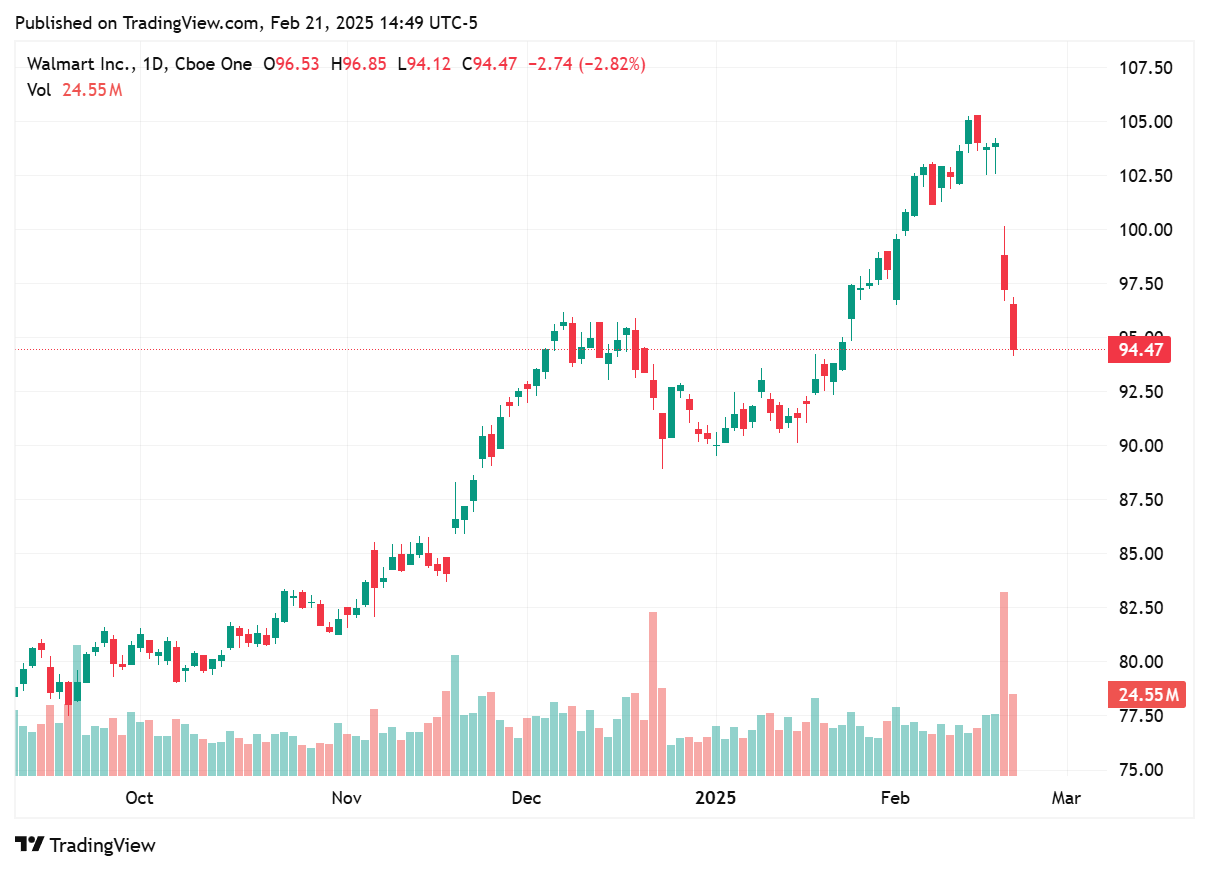WALMART
Earnings
Walmart's stock fell 6.7% on February 20, 2025, closing at $97.26.
This marked the largest single-day decline for Walmart stock in 15 months
.
As of February 21, 2025, at 2:47 PM EST, Walmart's stock price was $94.68, indicating continued downward pressure.
Walmart's recent earnings report and outlook provide significant insights into the health of the US economy, revealing both strengths and potential challenges ahead:
Strong Performance, but Cautious Outlook
Walmart reported impressive results for the fourth quarter and fiscal year 2025, with revenue reaching $180.6 billion in Q4, a 4.1% year-on-year increase. The company's full-year revenue hit a record $681 billion, growing 5.1% year-on-year. These figures suggest robust consumer spending and Walmart's ability to capture market share.
However, Walmart's guidance for fiscal year 2026 has raised concerns:
Expected net revenue growth of 3-4%, down from 5% in FY 2025
Adjusted EPS forecast of $2.50-$2.60, below analysts' expectations of $2.77
First-quarter EPS projection of $0.57-$0.58, significantly lower than the expected $0.64
This cautious outlook has led to a sharp decline in Walmart's stock price, with shares tumbling 6.7% on February 20, 2025.
Consumer Spending Trends
Walmart's performance offers valuable insights into consumer behavior:
Resilience: Despite inflationary pressures, consumer spending remains relatively strong, particularly in grocery sales.
Shift to essentials: There are signs that consumers may be prioritizing essential purchases over discretionary spending.
Income diversity: Walmart has gained market share among households with incomes over $100,000, indicating that even higher-income consumers are seeking value.
E-commerce growth: Walmart's US e-commerce sales grew 20% in Q4, marking the 11th consecutive quarter of double-digit growth.



